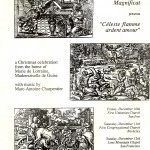
This year, for the first time in two decades, October passed without a set of Magnificat concerts. It has been very gratifying to hear from so many loyal Magnificat fans asking about the season and I am looking forward to coming home next month to see everyone. The program I chose for my homecoming has a special place for me personally and Magnificat as an ensemble and preparing the score and planning the concerts have been a wonderful and meaningful experience.
In many ways the program that Susan and I developed in 1993 to frame Charpentier’s Nativity Pastorale with arrangements of traditional noëls served as the model for many other Magnificat programs. The juxtaposition of sophisticated art music with contemporaneous folk music, the ideal of balance between vocal and instrumental music and each individual musician, all became hallmarks of Magnificat programs.
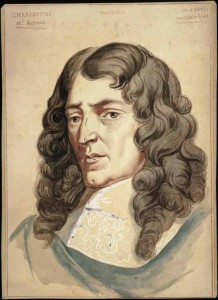
In 1670, upon returning to France from his studies with Carissimi in Rome, Marc-Antoine Charpentier became a member of the household of Marie de Lorraine, called Mademoiselle de Guise. One of the wealthiest women in Europe, and a princess in rank, Mlle. de Guise chose to live in Paris independent of the intrigues and obligations of court life under Louis XIV. She was a passionate lover of music, and maintained an ensemble of musicians, less opulent than that to be found at court, but highly admired by the Parisian connoisseurs of the time. The ensemble was made up for the most part of young people from families long under the protection of the Guise who, having come to live with Marie de Lorraine first as maids or companions, demonstrated some talent or interest for music. They were given lessons and eventually granted the status of musicians-in-ordinary, taking part in the devotional services at the private chapel and in the frequent private concerts at the Hôtel de Guise. The ensemble, although it included some salaried male singers and one member of a musical family (Ann Nanon Jacquet sister of the famous Elizabeth Jacquet de la Guerre), was fundamentally amateur and it is extraordinary that it should have developed to the extent that the journalMercure Galant in 1688 wrote that the music of Mlle de Guise was “so excellent that the music of many of the greatest sovereigns could not approach it.”
It was in this intimate and secure setting that Charpentier composed the Pastorale sur la naissance de Notre Seigneur Jésus Christ. He was composing for people with whom he lived, daily took his meals, and worked as a peer, himself singing alto in the choir; these were people with whom, to judge by the designation of parts in the manuscripts -Isabelle, Brion, Carlié, etc. – Charpentier was on a comfortable first name basis. Phillipe Goibault DuBois, another member of the Guise household who was actually the director of the ensemble and a scholar recognized by the Académie Française for his translations of Cicero and St. Augustine, most probably wrote the text of the Pastorale. The possibility that the Pastorale was intended to accompany a traditional Christmas pageant is raised by the list of acteurs on the title page of the manuscript: along with the shepherds and angels are the names of Mary and Joseph, who have no singing parts anywhere in the piece. Charpentier’s biographer Catherine Cessac has suggested that the Pastorale may have been intended for performance at a school for the education of poor girls supported by Mlle de Guise. It is easy to imagine costumed young girls arranged in traditional tableaux vivants during this musical expression of the Christmas story.
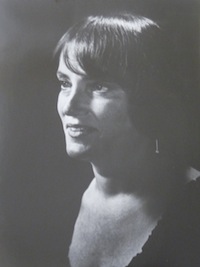
Along with all who were touched by her, I was deeply saddened to learn that soprano Judith Nelson had passed away earlier this year. Few musicians have had a bigger impact on me personally and Magnificat as an ensemble than Judy. She sang in over 40 Magnificat concerts in the 90s and appeared in one of the title roles (along with Paul Hillier) on Magnificat’s first recording, Cavalieri’s Rappresentatione di Anima e di Corpo. I also had the privilege of working with Judy in California Bach Society projects and in many other situations. But it was as a friend that I remember Judy the best and it is these memories that I treasure most.
The first thing that comes to mind when I remember Judy is how influential she was and how much everyone tried to sing like her but the second thing I think of is how, in fact, no one ever sounded like Judy except Judy. Of course, she sang exquisitely in every style and genre and yet it was always undeniably Judy. Her great gift to me (and to all of us) was in embodying the ideal of using your talent and ability to express who you are with integrity and conviction, which she did as well as anyone I have ever known.
In rehearsals Judy was always a model of professionalism but she also had a sharp wit and everyone who worked with her has plenty of memories of her playful sense of humor and well-timed rejoinders that always contributed to an atmosphere of camaraderie and common purpose. Judy had a uncanny ability to surprise through her vocal artistry and the depth of her understanding of the historical and musical context of the music she was performing, but also through her disarming candor.

While I will miss the joy of sharing a full season of terrific music from the early Baroque with my colleagues and with Magnificat's loyal audience next season, I am very pleased that I will be in California in December to lead Magnificat in a program that it very dear to me. In addition to my personal emotional connection with Charpentier's music, his character and the circumstances in which he wrote, this particular program represents a fascinating period of discovery for me personally.
The first music by Charpentier that I had the chance to perform was the Messe de Minuit(Midnight Mass) - a charming work that seamlessly weaves the folk melodies of noëls, already centuries old during the composer's life with a rigorous contrapuntal ideal. While the Nativity Pastorale does not incorporate noël melodies like the Midnight Mass, there are striking similarities in the poetic imagery of the noëls and their musical ...

Magnificat is pleased to announce performances of the Marc-Antoine Charpentier’sNativity Pastorale on the weekend of Dec. 7-9. The program will feature the Pastorale sur la naissance de Nostre Seigneur, one of Charpentier’s most brilliant and moving works. In this exhilarating blend of dramatic dialogues and ensembles, instrumental dances, and exquisite choral writing, Charpentier’s displays his immagination and technical mastery and his extreme sensitivity to poetic imagery. Magnificat’s program will include Charpentier’s settings of several of traditional French carols, or noëls, that are, by turns, charming, poignant, and amusing. Tickets are available online at magnificatbaroque.tix.com.
On a sabbatical after celebrating Magnificat’s 20th anniversary season, Artistic DirectorWarren Stewart will return to lead an ensemble featuring singers Catherine Webster, Jennifer Paulino, Clara Rottsolk, Clifton Massey, Paul Elliott, and Peter Becker, together with Vicki Boeckman and Louise Carslake, recorder; Rob Diggins and Jolianne von Einem, violin; John Dornenburg, viola da gamba and Jillon Stoppels Dupree, harpsichord.
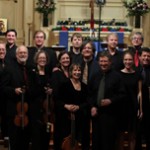
This article by Trista Bernstein was posted at San Francisco Classical Voice.
Every musician searches for masterpieces to bring to the stage. For two decades, Magnificat has been in pursuit of such creations to please Bay Area audiences. Luckily, it has narrowed its focus to the 17th century, a time bursting with dynamic composers and emotional works. “It’s a tribute to the audience in the Bay Area that a group could focus on repertoire from the 17th century and be successful and have a following,” explains Artistic Director Warren Stewart. “That’s a joint effort between Magnificat and the audience.” Stewart, an accomplished cellist, has dedicated the last 20 years of his career to early music. His love of Baroque music is evident in the dynamic programming presented by the group each season. “It’s a fascinating time and period of music. Lots of things were changing, new rules were being written, and new kinds of music were being invented. I think it’s really fascinating to have the opportunity to explore that remarkable music and share it with the audience.“
Stewart had the great responsibility of crafting Magnificat’s 20th season. “I tried to choose composers and specific pieces that were somehow representative of what we’ve done. They are very influential composers, and they’ve shaped our style and approach to interpretation. The four composers who were featured this season were the four towering figures of the century, and represent four of the major centers where music was being created.” Although many new pieces were presented during the current season, it has been very reminiscent of the group’s first season.
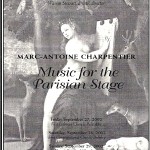
Coming off a triumphant performance at the 2002 Berkeley Festival and the release of a second recording of music by Chiara Margarita Cozzolani, Magnificat’s eleventh season featured music by Charpentier, Stradella, Isabella Leonarda and Buxtehude, as well as a conference on Women and Music in Italy and our first appearance in New York.
Working with Charpentier scholar John Powell, Magnificat opened the season with a program of music the composer had written for the Parisian theatre. In our first season we had presented incidental music that Charpentier had written mostly from plays by Moliére also based on Powell’s work. For this program music we selected music from three plays written in the 1670s: Circé, Les fous divertissements and La Pierre philosophale.
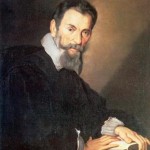
In 1638, Claudio Monteverdi, the seventy-one year-old music director of the ducal church of St. Mark’s in Venice, published his Eighth Book of Madrigals, the final collection of his secular music to be issued in his lifetime. He had last published a set of secular compositions in 1619, so the Eighth Book has a retrospective character, bringing together music written as early as 1608, and including one large work from 1624 and a variety of other compositions whose origins are unknown but which probably span the entire period 1619-1638. This unusually large collection was dedicated to Ferdinand III, the newly crowned Hapsburg Emperor in Vienna, whose mother was a member of the ducal family of the Gonazagas, former rulers of Mantua in northern Italy, where the early part of Monteverdi’s career had unfolded and to which he was still connected by various threads.
Monteverdi subtitled the Eighth Book Madrigali guerrieri et amorosi con alcuni opuscoli in genere rappresentativo(“Madrigals of war and love with some pieces in the theatrical style”), and the texts repeatedly expound the interlocking themes of love and war– the warrior as lover, the lover as warrior and the war between the sexes. The relationship between love and war had been a common Italian poetic conceit ever since the time of Petrarch in the 14th century, and had been given additional impetus by its prominence in Torquato Tasso’s late 16th century epic poem, Gerusalemme Liberata. The notion of lover as warrior was also central to the Neapolitan poet Giambattista Marino, who exerted a significant influence on Italian literature and aesthetics of the 17th century and whose poetry was set many times by Monteverdi.
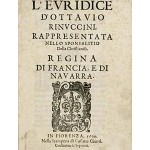
Five of the poems set by Monteverdi in his Madrigals of War and Love are by Ottavio Rinuccini, a poet at the Medici court in Florence and the author of the first opera libretti. Closely connected with staged entertainments throughout his career, Rinuccini’s earliest poetry was written for the wedding festivities of Francesco de’ Medici and Bianca Cappello in 1579. Part of the circle of artists, poets and noblemen scholars known to musicologists as the “Florentine Camerata,” Rinuccini also provided texts for the famous intermedi at the performance of La pellegrina at the wedding of Ferdinand I de’ Medici and Christine de Lorraine in 1589 and later wrote the libretto for Jacopo Peri’s Dafne in 1597.
His most historically noteworthy work though was Euridice, his re-telling of the Orpheus legend that was set by both Peri and Giulio Caccini in 1600 that are considered the first operas. No less important was his libretto for Monteverdi’s second opera, Arianna. The score for Ariannahas not survived save for Arianna’s lament, which was published independently and became one of the best known and most often imitated works of the century. Rinuccini may have also been involved with Striggio’s libretto for Monteverdi’s first opera L’Orfeo.

Everything but the sermon.
Other than that, it’s the full package this weekend as the Magnificat Baroque Ensemble re-creates Christmas Vespers at the Dresden Court Chapel circa 1660. Friday’s rendering in Palo Alto was a gleeful holiday present for early-music lovers, unleashing sounds of sackbut and curtal (distant relatives of trombone and bassoon), while bringing forth German composer Heinrich Schütz’s “Christmas Story,” a setting of the Gospel narrative.
Schütz’s wondrous piece — quasi-operatic — was the centerpiece not only of the court’s service back in 1660; it also was the centerpiece of a 1992 program by Magnificat, during its inaugural season in the Bay Area. And just as Warren Stewart, the group’s artistic director, conducted the performance in 1992, he led it Friday. He was surrounded onstage at First United Methodist Church by 13 instrumentalists and eight singers, including bright-voiced German tenor Martin Hummel, passionately singing the role of the Evangelist, as he did in 1992.

The San Francisco Early Music Society and Warren Stewart’s Magnificat combined forces this season to reconstruct a Christmas Vespers service, as it would have been given in the Dresden Court Chapel of 1660. This production was given its San Francisco performance last night at St. Mark’s Lutheran Church. The Lesson for such a service would have been an account of the Nativity from one of the Gospels. Music for the service would have been the responsibility of the Kapellmeister to the Elector of Saxony, at that time Johann Georg I. That Kapellmeister in 1660 was Heinrich Schütz.
Thus, the major work at last night’s performance was a setting of Nativity texts in what was probably one of the earliest forms of oratorio. This involved music for both a chorus and soloists, with the soloists corresponding to the characters of the narrative along with an “Evangelist” narrator, with instrumental accompaniment. For the libretto for this narrative, Schütz drew upon two of the Gospels: Luke (primarily the first 21 verses of the second chapter) and Matthew (the first 23 verses of the second chapter). In addition to the Evangelist, the characters consisted of an angel, the shepherds in the field, the three wise men, Herod, and his high priests.
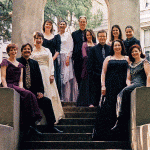
Magnificat celebrated it’s tenth season with a mix of old and new programs that included two of the composers featured in the 20th anniversary season this year: Heinrich Schütz and Claudio Monteverdi. The season also saw the release of our first two recordings of the Chiara Margarita Cozzolani’s music and two more weeks of recording sessions. Magnificat also made another appearance at the biennial Berkeley Festival and Exhibition.
A week of Cozzolani recordings in August preceded the regular season, which began in September with a program devoted to an excellent but under-performed composer, Johann Hermann Schein, one of Bach’s predecessors as cantor at Thomas Kirche in Leipzig. Already in Magnificat’s first season, Magnificat had included Schein’s striking setting of the Vater unser as part of our December concerts and individual works by the composer had made their way into program on other occasions. The release of a recording of Schein’s Banchetto Musicale in 2000 by the Sex Chordæ Consort of Viols led to plans for a joint program of the composer’s consort music and vocal works.
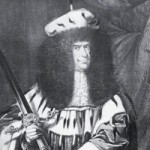
When Schütz was first engaged as Kappelmeister by the Elector of Saxony, Johann Georg I, the court in Dresden boasted one of the finest musical establishments north of the Alps. After Saxony's disastrous decision in 1627 to enter the then decade-old conflict now known as The Thirty Years War, this once glorious musical establishment was decimated, and Schütz spent a considerable amount of time away from Dresden - notably in Venice and Copenhagen. After the Peace of Westphalia in 1648 matters improved and the Elector was again able to devote resources to music.
Significantly, the Elector's son, who would become Johann Georg II, created his own musical ensemble, parallel to his father's, that reflected his musical tastes - and those those tastes were decidedly Italianate. Johann Georg II was strongly influenced in his musical tastes by his father's Kappelmeister, particularly after Schütz's visit to Venice in 1629. Already in the 1640s, ...

Magnificat performs Schütz’s Christmas Story and other music from the Dresden Court the weekend of December 16-18.Tickets are available here.
In what has become a decennial tradition, Magnificat will perform Schütz’s Weihnachtshistorie (Christmas Story) in the context of a Christmas Vespers from the Electoral Court chapel of Saxony in Dresden. Schütz’s masterpiece served as the Gospel reading in the Dresden liturgy and in 1992 and 2001, settings of the remaining texts in the liturgy (the psalm, Magnificat, Vater unser, etc.) were drawn from other works by Schütz and colleagues from earlier in his carrier in Dresden, namely Michael Praetorius, Johann Hermann Schein, and Samuel Scheidt – all music from the first half of the 17th Century. For this season’s incarnation of Christmas Vespers ina co-production with the San Francisco Early Music Society, Magnificat will focus on the music in fashion in Dresden in 1660, when Schütz wrote the Weihnachtshistorie. In creating this program, we have been fortunate to have the assistance of Magnificat Artistic Advisory Board member Mary Frandsen, professor of musicology at Notre Dame University, whose 2006 book Crossing Confessional Boundaries, explored musical patronage in Dresden under Johann Georg II.
Saxony, along with the rest of northern Europe, was finally beginning to recover from the economic and social devastation of the Thirty Years War (1618-1648). As always resources had been devoted to weapons instead of people and for many years during the war musicians in the court musical ensemble were paid only occasionally. In a letter written in 1651, Schütz described “the very great lamentation, distress, and wailing of the entire company of poor, deserted relatives of the singers and instrumentalists, who live in such misery that it would move even a stone in the earth to pity.”
The situation changed significantly in the 1650s, particularly with the ascent of Johann Georg II in 1656. While there was some concern among church authorities about his allegiance to the Lutheran confession, Johann Georg II was quite devoted to spiritual matters and to the support of the arts, and the new Elector lavished huge sums from the court treasury on an opulent musical ensemble. Some of the finest Italian singers were appointed and the instrumental ensemble was expanded to become one of the finest musical establishments in Europe.

Magnificat’s ninth Season began earlier than usual with a week of recordings at St. Stephen’s Episcopal Church in Belvedere in August. All the works by Chiara Margarita Cozzolani that Magnificat had performed on the San Francisco Early Music Society series the previous December were recorded plus two new psalms and a motet, Maria Magdalene stabat. The sessions ended with a performance for a small invited audience. The sessions were such a success that the decision was made for Musica Omnia to release not merely a Vespers CD but to undertake a project to record Cozzolani’s complete works and another week of recordings were planned for January.
The season officially opened in September with a program devoted to settings of texts from the Song of Songs, a rich source for composers throughout the 17th century. While Magnificat’s program most often are focused on a single composer, style, or historical event, this program, entitled “Sonnet vox tua in auribus meis,” featured settings in a variety of genres and from several composers. After an opening motet from Palestrina’s fourth book of motets for 5 voices, the program was divided into four “chapters,” each beginning with one of the four “seasons” of Charpentier’s soprano duet Quatour anni tempestes.
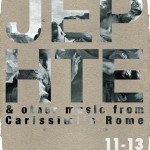
The following review was posted at San Francisco Classical Voice on November 15, 2011.
One of the nice things about an ensemble like Warren Stewart’s Magnificat, which I heard Saturday at St. Mark’s Church in Berkeley, is that having a flexible roster of musicians enables it to match itself to the needs of the music at hand. Giacomo Carissimi’s 1650 oratorio, Jephte, which Magnificat performed, has been a particular victim of the tendency to recast early music into the Romantic mode of grand works: adding wholesale orchestrations and lush vibrating string parts to this work for continuo and soloists. Composer Hans Werner Henze once managed to work in parts for tom-tom, boo-bam, banjo, marimba, glockenspiel, trumpets, and four flutes when commissioned to orchestrate it for a London Bach choir.
So it was a relief to hear Magnificat perform the work in a manner the composer may have recognized and, not surprisingly, at the ensemble’s usual high standard. I might fault Magnificat for going too far in the other direction: performing the work’s choruses by soloists. Still, by virtue of attracting the right solo voices, Magnificat achieved a moving choral effect. The beauty of Jephte’s concluding chorus, one of the great choruses of all time, is the reason the work remains marginally familiar. The biblical Jephta story is essentially the same as the Greek Idomeneo story: The hero makes a vow to God that if he is victorious on his quest he will sacrifice the first person he sees when he returns. In Jephta’s case it’s his daughter, thus providing an opportunity for expressive sad music. The masterwork was clearly known to another great Baroque composer. In addition to writing an excellent Jephtha oratorio 100 years after Carissimi, Handel found it fitting to appropriate Carissimi’s choruses in some of his other oratorios, especially when he needed choruses for Jews in various forms of bondage.
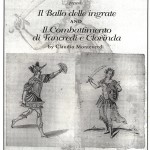
Spanning the turn of the millenium, Magnificat’s eighth season featured a variety of styles and included a staged production of Pergolesi’s La Serva Padrona, choreographed performances of two Monteverdi madrigali rappresentativi and a Mass by Frescobaldi. It also included Magnificat’s first encounter with the astonishing music of Chiara Margarita Cozzolani that set in motion a decade-long project of performing and recording her complete works.
There are only two singing roles in Pergolesi’s comic intermezzo a willful and beguiling servant Serpina (sung by Jennifer Ellis in Magnificat’s production) and her bumbling master Uberto (sung by David Newman), whom she tricks into marriage. But this performance also featured Paul Del Bene in the silent role of Volpone, Uberto’s manservant, and his acrobatic hijinks contributed hilariously to the performances that the San Francisco Classical Voice described as a “refreshing blend of silliness, song, and somersaults.” The program included three instrumental works of Pergolesi: a violin concerto that featured Rob Diggins as soloist, the Sinfonia from his opera Lo frate innamorato that served as an overture and a sonata for violin with obbligato cello.

In addition to four vocal works by Carissimi, Magnificat’s November program will include three instrumental compositions by composers active in Rome during Carissimi’s lifetime: keyboard works by Michelangelo Rossi and Girolamo Frescobaldi, and a toccata for theorbo by Johann Hieronymus Kapsberger. All three were among the finest virtuosi active in Rome during the first half of the 17th century and it is certain that their paths crossed with Carissimi after his arrival in 1629.
A remarkably versatile musician, Michelangelo Rossi held prominent positions as a composer, violinist, organist, and most likely also as a singer. Rossi was most famous during his lifetime as a virtuoso violinist (in pay records in Savoy he is often referred to as “Michelangelo il Violino”,) though no examples of his music for that instrument survive. Born into a musical family in Genoa, Rossi moved to Rome by 1624 and entered the service of Cardinal Maurizio of Savoy, where he worked with Sigismondo d’India, whose influence on Rossi’s vocal music is striking. During this period he also encountered Frescobaldi, with whom he may have studied.
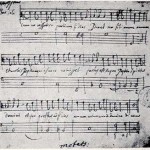
“The most excellent Iacomo Carissimi, a composer of great fame, most worthy maestro di cappella of the Church of S Apollinare of the German College for a period of many years, outshines others in originality and in case of compositional style, moving the spirits of the listeners into many moods; for his compositions are full of life and vivacity of spirit.”
Writing in 1650 in his widely circulated tome Musurgia Universalis, Athanasius Kircher was unreserved in his praise for his fellow Jesuit Iacomo Carissimi and drew on many of the master’s works to exemplify the use of music to express emotion and touch the affections of an audience. His reputation as a composer and teacher was promoted by the singers he worked with and his many students, most notably Marc-Antoine Charpentier. Händel famously plagiarized some of Carissimi’s works and Charles Burney, writing over a century after the composer’s death, devoted more space to Carissimi in his General History of Music than to any other composer of the 17th century.
The son of a barrel-maker, Carissimi’s exact birth date is unknown, but it was probably in 1604 or 1605 in Marino, near Rome where he was baptized on April 18, 1605. Almost nothing is known of his life before he is listed as a singer at Tivoli in 1623. Two years later he was organist there. His first appointment as maestro di cappella came in 1627 at the S. Rufino Cathedral in Assisi. The following year he was called on by Bernardino Castorio in Rome to fill the post of maestro di cappella at the German College there, a prestigious post in which Victoria and Agazzari had served earlier. Carissimi spent the rest of his life at the college and he was ordained to the priesthood in 1637. His responsibilities included training the choirs and providing liturgical music for the adjoining S. Apollinare chapel. His official salary of 5 scudi (in 1634) probably reflects only a fraction of his actual income. In 1655-56 he was given the title maestro di cappella del concerto di camera by Christina, the Queen of Sweden in exile in Rome.
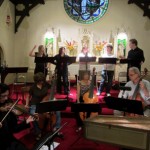
I have long wished to hear a live performance of Marc-Antoine Charpentier’s Descent d’Orphée aux enfers. Several years ago, I even transcribed portions of the composer’s manuscript from a facsimile in the UC Berkeley library. If I could have chosen any Bay Area ensemble to perform the work, it would have been Warren Stewart’s early-music ensemble, Magnificat, which assembled an ideal cast for its performance Sunday at St. Mark’s Lutheran Church in San Francisco. I cannot imagine a more perfect rendition.
Successful performances depend on assembling the rare musicians who “get” this style. With Magnificat, tenor Aaron Sheehan sang the title role of Orpheus with an exquisite tone perfectly matched to this repertory. French Baroque music requires a sort of nuanced singing that is less oriented toward large phrases and showmanship, though I doubt that Sheehan, who sang superbly, would have any difficulty in more legato music.



















